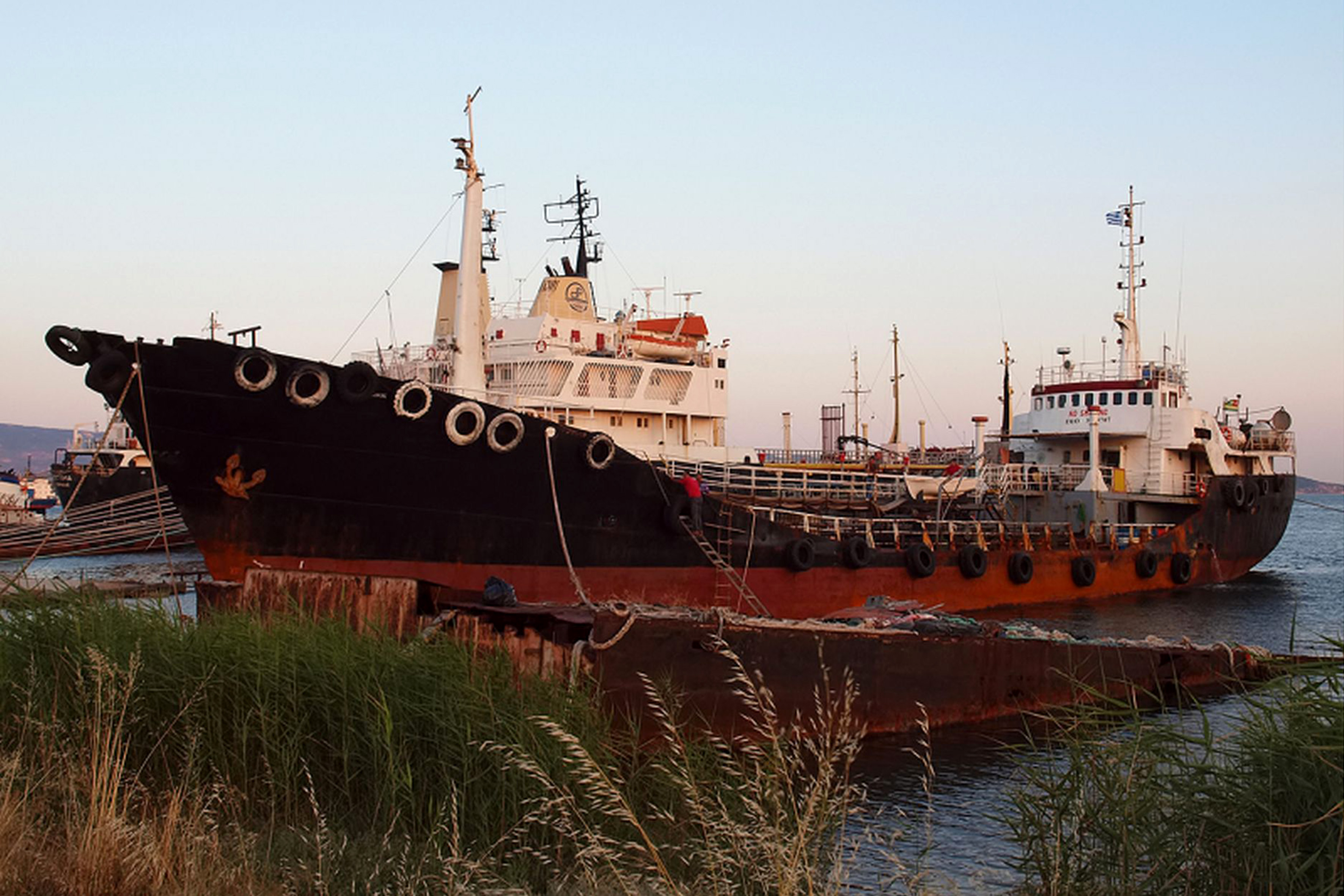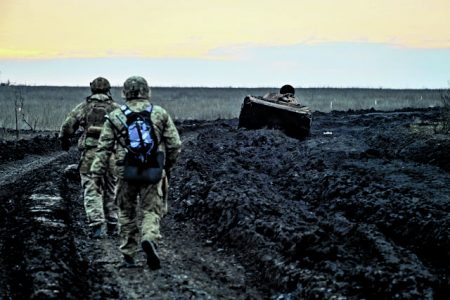The arrest in Istanbul several days ago of 44-year-old major drug trafficker Serifi Zindashti – on an arrest warrant issued by Greek authorities- is the most significant development in the last months in the case of the transport of 2.1 tonnes of heroin on the ship Noor 1, which was spotted in June, 2014, in Elefsina.
The 44-year-old Turkish mega drug trafficker has already been charged, along with two compatriots, as the basic funder of the Noor 1 cargo, and as the man who organised the transport of narcotics to Belgium, The Netherlands, and other Central European countries.
The arrest of Zindashti is a major blow to a game of many years involving political and entrepreneurial objectives and interests, surrounding the notorious drugs ship, aiming at implicating arbitrarily in the Noor 1 affair the name of famed shipowner and Olympiacos FC president Vagelis Marinakis.
Four years after the discovery of the freight, there have been court rulings, hundreds of witness testimonies, US DEA reports, the recent arrest of Zindashti, and other decisive evidence that determines clearly the involvement of Greek, but mainly Turkish and Iranian heroin traffickers.
Much of that has purposely been hidden or not taken into account. Hence, over the last years there have been unprecedented machinations, with unfounded allegations and conspiratorial assertions about the “third tonne of heroin”, about suspect wires to the Noor 1, and about peculiar offshores, with no grounding whatsoever.
Probing the sidelines of the case
To Vima on Sunday reveals, with evidence, the sidelines of the Noor 1 affair over many years.
The transport of two tonnes of heroin from Dubai to Elefsina with the small tanker Noor 1 (being loaded en route to the Persian Gulf) was discovered in June, 2014. The narcotics were found in the Filothei villa of businessman Efthimios Giannousakis and in a warehouse in Koropi.
From the probe of the case in Greece, 35 people were charged, including Greek representatives of shipping companies in Greece and the Middle East, Turkish traffickers, Indian crew members of the tanker and others.
From the first days it was revealed that the heroin traffickers were individuals of Turkish descent in Turkey, Iran, and northern Europe, where the huge heroin freight would wind up.
The judicial probed showed that Greek involvement in the Noor 1 pertained to leasing the ship and transporting the freight from the Persian Gulf to Elefsina. The purchase of the heroin in the Middle East and its distribution in Europe was the work of Turkish criminals who, as testimony in the Noor 1 trial in 2015-2016 showed, had faced earlier criminal cases in Turkey, Iran, Romania, Belgium and elsewhere.
During the trial, an obvious and important question was answered – Why was such a huge quantity of heroin not spotted by Egyptian authorities when it passed through the Suez Canal? There were references to an Egyptian shipping agent paying off local officials. Moreover, there was a special metal construct on the Noor 1 to hide heroin even in the case of a spot check.
A few days after the freight being spotted, there were leaks and assertions from a prisoner, Coast Guard officials, and former Greek police officials about the “possible implication” of Marinakis in the case, and they hastened to brief judicial officials and businessmen-competitors related to athletics about the uncertain “finding” that was belied by a series of evidence.
‘The trip’ and the company’s error
The first assertion was that a known shipowner “financed the trip of the Noor 1”.
Yet, the judicial file and the court case showed that the cost of the trip was about 120,000-140,000 euros and was paid by the accused in different phases.
When, due to the irregular funding and conflict between Greek and foreign shipping agents, the journey confronted problems, it stopped in the Suez Canal, where passage could not be paid due to a lack of cash.
Then, Coast Guard officials began propagating the assertion – which was not confirmed – that for the heroin transport the company Arab Wave Shipping FZE was used, based in Sharjah of the UAE, which was at first seen as the key to the case, but nothing came of it.
Indeed, the court ruling on the Noor 1 stated on page 1,572 that “There is no link between this company and the drugs.”
The truth about the 2.1 tonne heroin freight
The second assertion that has been officially rejected is that a known Greek businessman was the funder of the same heroin freight. From the start it was overlooked that all the court evidence showed that the organisers and recipients of the drugs freight were big Turkish and Iranian traffickers with major prior criminal activity, who reside in Turkey and Belgium.
Beginning in September, 2014 – three months after the freight was spotted – there began in Turkey a series of bloody acts of reprisal attacks between Turkish and Iranian criminals, over the “loss” of 2.1 tonnes of heroin.
On 26 September, 2014, the daughter of major Turkish drug trafficker Serifi Zindashti (the one who was arrested in Istanbul) and his 23-year-old driver were murdered in cold blood by two assailants. On 26 December, 2014, two young Turks were murdered as revenge for the murder of Zindashti’s daughter.
Five more murders followed in Turkey, Belgium, and Dubai, all of which were linked by Zindashti and Turkish police to the “case of drugs in Greece”.
Yet, there was no reaction in Greece, where the fixation about a “Greek funder” prevailed.
It was later revealed that in that period there were briefings of Greek officers – in Athens and Istanbul – by the DEA regarding Turkish funders of the Noor 1 (there was no reference to the name Marinakis). These briefings were hushed in Greece.
About a year after the revelation of the Noor 1, there was discovered on Giannousakis’ cell phone a video of his spring, 2014, meeting with major Turkish drug trafficker Serifi Zindashti in Istanbul, where it appears the heroin freight is being arranged.
In November, 2015, Giannousakis offers a secret deposition to Piraeus judicial authorities – through his Piraeus lawyer Ioannis Glykas – where he confirms the involvement of Zindashti, his brother who had a restaurant in the UK, and a Belgian of Turkish descent, Orhan Ourm – who was arrested by Turkish authorities and imprisoned in Istanbul – as funders of the 2.1 tonne heroin freight.
It was recently confirmed that in early 2016 the DEA wrote a report about the Turkish traffickers of the Noor 1, about which the Turkish press featured extensive reports.
There was no allusion or even hint of the name of the Greek shipowner in the DEA report. In the Noor 1 trial, no Coast Guard official or other witnesses referred to a Greek funder.
Finally, regarding the Noor 1 freight funding, arrest warrants were issued in September,2017 (over three years later) for the Turkish major drug traffickers, although all the evidence was available almost from the start of the case.
The judicial files are sealed, as judicial assistance was not requested of Turkey, and so the evidence that reveals the complete truth has not been announced.
Theory of ‘third tonne’ of heroin
The third, ridiculous assertion is the paramount false construct. When the allegations of a Greek businessman funding the 2.1 tonne freight were belied by evidence regarding the Turkish drug traffickers arrested in Istanbul, a new invention was presented two years later.
That was the assertion that there was a third tonne of heroin on the Noor 1 which was “funded and personally managed by the Greek shipowner”, and which allegedly was unloaded in Crete and taken by Serbs and Kosovars. Not even a microgram of this alleged extra tonne of heroin was ever found.
That scenario was apparently based on a telephone interview with Giannousakis, which was posted on a news site in May, 2017. He himself charged that he was under insufferable pressure in the Avlona prison, from a Coast Guard officer who visited him, and from telephone calls from Defence Minister Panos Kammenos, to “incriminate Marinakis”.
There is invocation also of a note supposedly found by chance on the Noor 1, many days after the 2.1 tonne heroin freight was discovered, which refers to “500 kilos of powder that will be loaded on a ship in Crete”.
The note proved to be forged. It was revealed that the said ship was a large tanker which was in Liverpool during the journey of the Noor 1.
The third tonne theory is full of holes for other reasons as well. Never in the first level of the trial did any of the dozens of witnesses or accused speak of a third tonne of heroin, even though many confessed all their moves. In the 2,095 page court transcripts, there are 30 references to 2.1 tonnes, and nothing more.
The “discovery” of the third tonne first appeared in a post of an athletic news site (with a series of allegations against Marinakis) on 3 September, 2016, under the title, “There were three tonnes on the Noor 1”.
The theory began being peddled eight months before Giannousakis “revealed” it.
“We all know that the heroin ship Noor 1 was transporting 2.1 tonnes. I heard it where I heard it and I have no reason not to take it into account: The heroin freight was three tonnes, and the 900 kilos were whisked by a special mission ship to Serbia,” the post stated.
In the trial of a lawsuit against media in which Kammenos testified in spring, 2017, he suddenly spoke of a “third tonne of heroin”, which was based on no evidence and was obviously the product of arranged testimony.
Exit restriction against Marinakis not upheld
By unanimous decision of a Piraeus Lower Court Council, an exit restriction order against Evangelos Marinakis issued by Piraeus prosecutor Eirini Tziva was not upheld. The Council also threw out exit restrictions against the former managing director of Capital, Nikos Syntichakis, Piraeus lawyer Vagelis Bairaktaris, and shipping insurance agent Elias Tsakiris.
In its rationale, the judicial council touched on all related issues and ruled that the prosecutor’s order was not justified, either as regards the alleged strong indications of guilt or as regards the reasons of public interest cited in issuing the order, which it thus did not uphold.
“From the evaluation of the evidence regarding the family status and professional activity of the accused, combined with the fact that the prosecutor’s order rests on general and vague assessments of the basis of the charges and of the reasons of public interest in order to bar his exit from the country, due to the nature and weight of the charges against him, and the suspicions of flight abroad, without citation of specific incidents that prove the strong indications of guilt against him, and mainly the intention to flee abroad.”
The ‘suspicious funding’ of …nothing
The fourth assertion attempts to create an economic grounding for the non-existent and invisible third tonne of heroin, by alleging that Marinakis and his associates made suspect money transfers related to the bogus “third tonne”.
This is the “evidence” brought to bear by the probe of Piraeus Prosecutor Eirini Tziva. However, no evidence was presented linking these legal shipping transactions in the Middle East with the Noor 1 and the non-existent third tonne.
The peculiar and contradictory thing is that transactions from the beginning of 2013 and from mid-2015 are considered to be linked to the Noor 1.
The Noor 1 itinerary was arranged in spring, 2014, and the freight was spotted in June of the same year. Hence, the new legal rationale suggests that someone “funded the purchase of narcotics a year after they were confiscated”.
That legal reasoning entails another irrational element. Since the alleged purchase of three tonnes of heroin was made altogether in Pakistan, how was the purchase of 2.1 tonnes paid for – as is confirmed – by the major Turkish traffickers “split up” from the “additional tonne” paid for by “Greek funding”?
The documents in Ms Tzivas’ new court file contain an indicative reference to a “suspect American company with large deposits of nearly eight million dollars in the account of Giannousakis’ company G-Tankers”.
The company is the Illinois-based MCMP, which has two Greeks on its Board. Ms Tzivas’ documents cites the testimony of one of the two Greek businessmen, stating that the eight million dollars concerned funding of a Giannousakis business plan, and that this was not answered during her investigation, which is considered to be suspect and linked to the Noor 1.
At first, it was confirmed that G-Tankers had no connection to the Noor 1 voyage. Most importantly, the eight million dollar transaction was addressed in the Noor 1 trial. Page 713 of the court transcripts says that Giannousakis presented the agreement he had signed with MCMP to gradually pay off money that he manages from another ship, the Grand Island, which engaged in regional petrol transport.
Vasilis Lambropoulos





